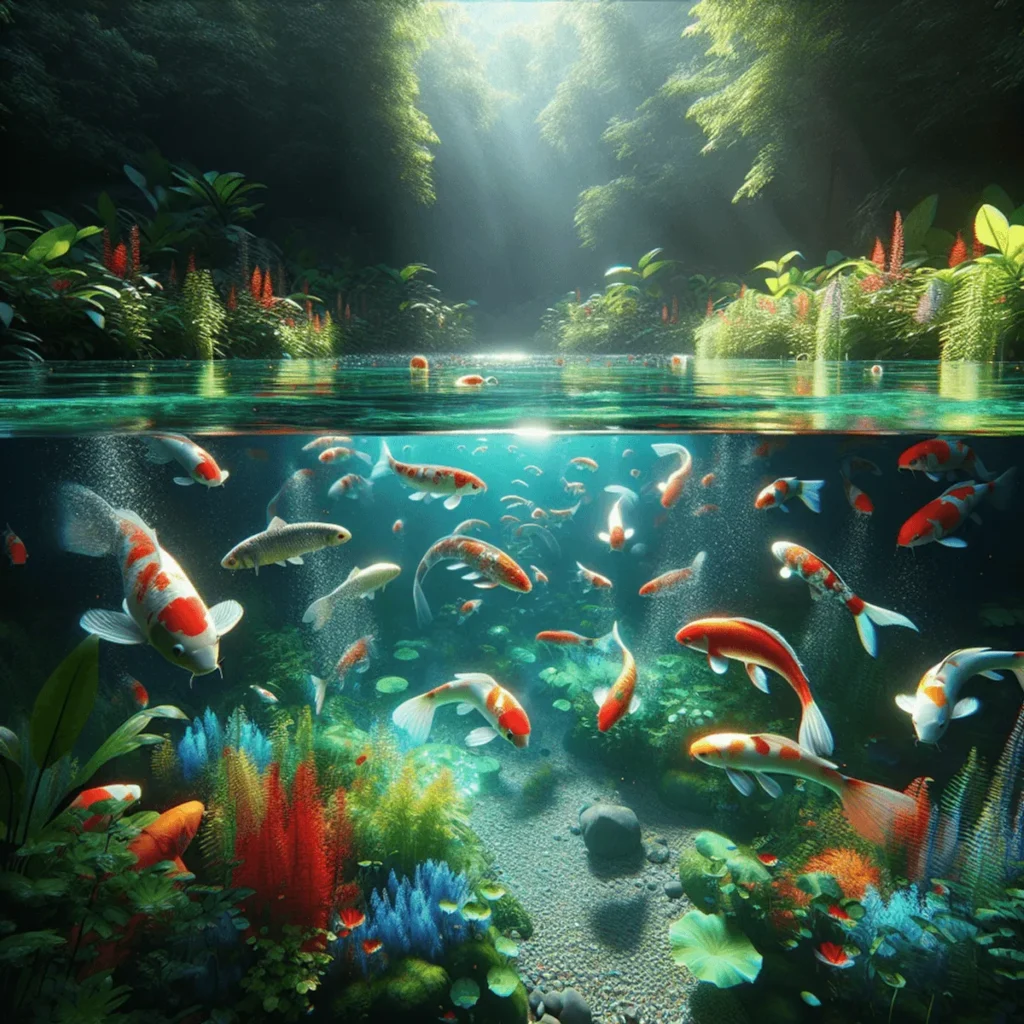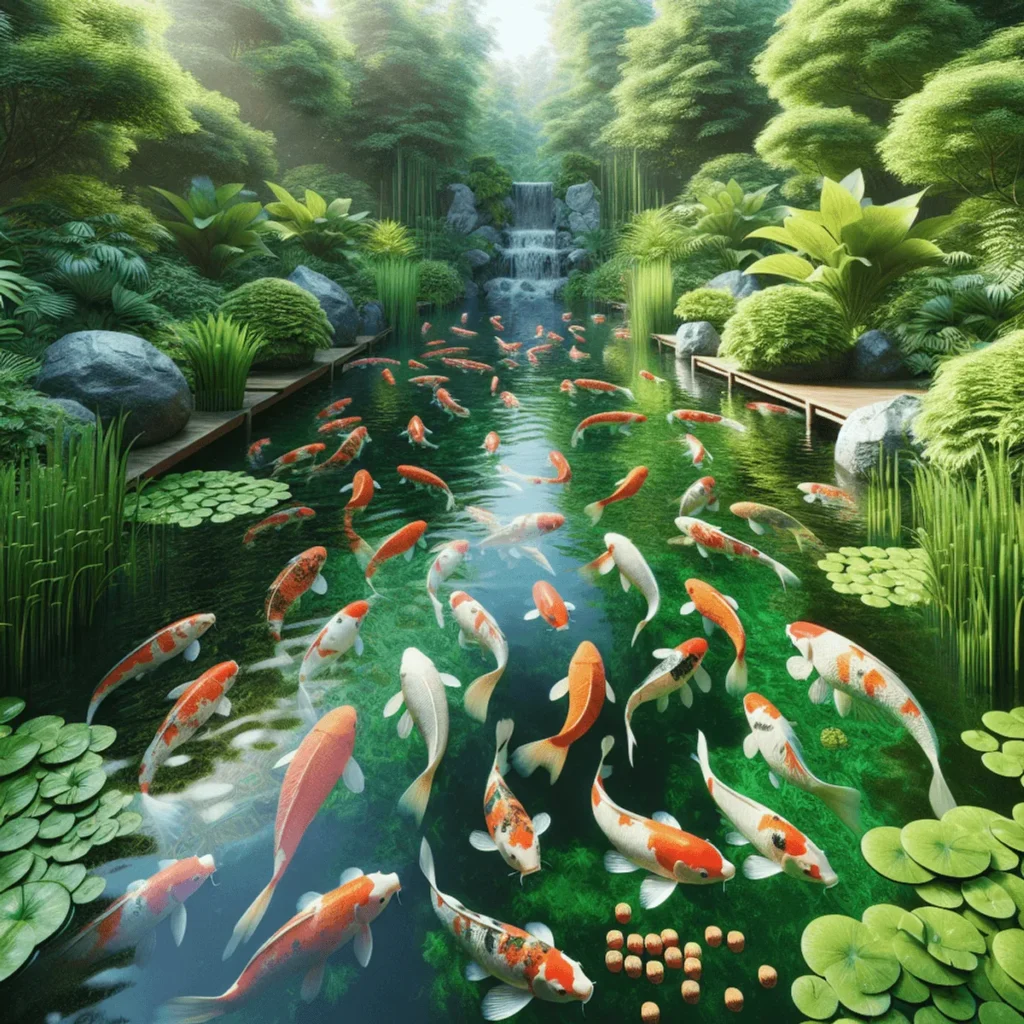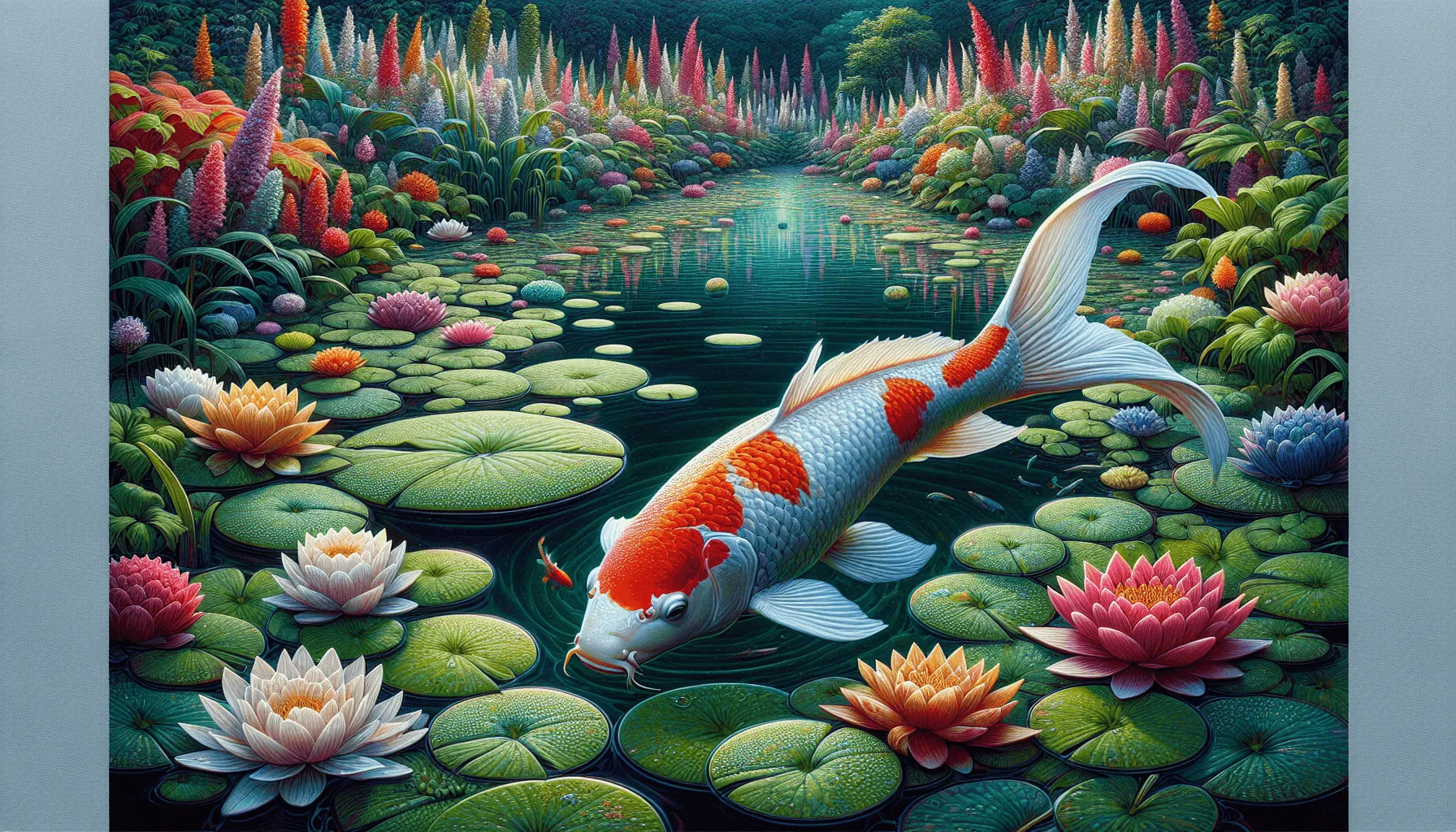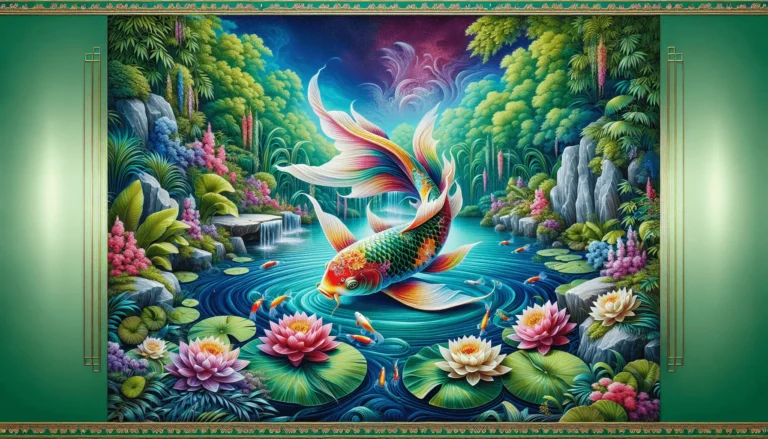How to Save a Dying Koi Fish: A Step-by-Step Guide
Koi fish are not just beautiful additions to your pond; they play a crucial role in maintaining ecosystem balance. These vibrant creatures help control algae growth and recycle nutrients, contributing to a healthier aquatic environment.
Common issues that lead to koi fish distress and death include:
- Poor water quality
- Disease
- Stress
Addressing these factors is essential for ensuring the health of your koi. By understanding the causes of koi fish death and taking proactive measures, you can save your beloved pets from a tragic fate.
Understanding the Causes of Koi Fish Death
Identifying the common causes of koi fish death is crucial for effective intervention. Several factors can lead to distress and mortality among koi:
Environmental Factors
Environmental elements play a significant role in the well-being of koi fish:
- Temperature Fluctuations: Sudden changes in water temperature can shock koi fish, leading to stress and potential death. Consistent temperature regulation is essential.
- Pollutants in Water: Contaminants such as heavy metals, chemicals, and organic waste can degrade water quality and harm koi. Regularly testing and treating water helps mitigate this risk.
Stress and Overcrowding
Stress in koi fish compromises their immune system, making them more vulnerable to diseases:
- Overcrowding: High population density increases competition for resources and exacerbates stress levels.
- Handling and Transport: Frequent handling or moving can induce stress, which negatively impacts their health.
Nutritional Deficiencies
Proper nutrition is vital for maintaining the health of koi fish:
- Poor Quality Food: Feeding low-quality or expired food can lead to nutritional deficiencies.
- Imbalanced Diet: Koi require a balanced diet rich in proteins, vitamins, and minerals. Lack of essential nutrients can result in weakened immune systems and various health issues.
Understanding these causes enables you to take preventive measures, ensuring a healthier environment for your koi.
Assessing Water Quality: The Key to Koi Fish Survival

Water quality is crucial for the well-being of your koi fish. Poor water conditions can quickly lead to stress and disease, putting their survival at risk. By maintaining optimal water quality, you create a stable environment where your koi can thrive.
Key Parameters to Monitor:
- pH Levels: Aim for a pH between 7.0 and 8.5. Extreme fluctuations can stress your koi.
- Ammonia: Toxic even in small amounts. Levels should be as close to zero as possible.
- Nitrites: Another harmful compound that should be minimized to near-zero levels.
- Nitrates: While less harmful than ammonia and nitrites, high nitrate levels can still stress fish. Keep them below 40 ppm.
- KH (Carbonate Hardness): Essential for stable pH levels. Aim for a KH between 6-10 dKH.
Using a KH test kit helps ensure stable water chemistry. To use it effectively:
- Collect a Water Sample: Use a clean container to gather pond water.
- Add Test Reagent: Follow the instructions on your KH test kit, usually involving adding drops of reagent to the sample.
- Count Drops: Each drop added until a color change indicates the KH level.
Regularly monitoring these parameters allows you to make timely adjustments, securing a healthy habitat for your koi fish. Investing in reliable test kits and conducting frequent checks will go a long way in preventing issues caused by poor water quality.
Creating a Healthy Pond Environment for Your Koi Fish
Pond maintenance for koi is crucial in promoting a balanced ecosystem and preventing the buildup of harmful substances. Regularly skimming debris, removing dead plant material, and cleaning pond filters are essential tasks.
Investing in proper filtration and circulation systems ensures clear, oxygen-rich water for your koi:
- Mechanical Filters: These trap solid waste and debris before they decompose.
- Biological Filters: Utilize beneficial bacteria to break down ammonia and nitrites into less harmful nitrates.
- UV Clarifiers: Control algae growth by exposing water to ultraviolet light, which kills algae cells before they can reproduce.
A well-designed filtration system mimics natural processes that maintain water quality. Circulation systems, such as air pumps and waterfalls, increase oxygen levels, vital for koi health.
Regular monitoring of these systems helps detect issues early. Replacing worn-out parts and maintaining equipment reduces the likelihood of malfunctions leading to poor water quality.
By following these best practices, you create an environment where your koi fish can thrive, reducing stress-related health problems significantly.
Implementing Regular Water Changes: A Simple Yet Effective Solution
Ensuring the health of your koi involves regular water changes. The ideal water change frequency for koi generally ranges from 10-20% of the pond volume weekly. This helps in maintaining optimal water quality without causing stress to your fish.
Methods for Performing Water Changes
- Gradual Replacement: Replace small amounts of water at a time to prevent shocking your koi or disrupting beneficial bacteria colonies.
- Dechlorinated Fresh Water: Always use dechlorinated water to avoid introducing harmful chemicals into the pond.
- Temperature Matching: Ensure the new water is close in temperature to the existing pond water to prevent thermal shock. It’s advisable to keep the temperature variation minimal, ideally under a few degrees, for a smoother transition.
Benefits of Routine Water Changes
Regular water changes bring multiple benefits:
- Waste and Toxin Removal: By routinely replacing a portion of the pond’s water, you effectively remove accumulated waste and toxins that could harm your koi.
- Stable Water Parameters: Frequent changes help maintain stable pH, ammonia, nitrite, and nitrate levels, crucial for a healthy environment.
- Enhanced Oxygen Levels: Introducing fresh water can improve oxygen content, vital for your fish’s well-being.
Implementing these practices ensures your koi thrive in a clean, balanced habitat.
Feeding Your Koi Fish Right: A Guide to Optimal Nutrition

Feeding your koi fish the right way is essential to their health and longevity. Selecting high-quality food pellets that meet the specific dietary needs of your koi at different life stages is crucial. Look for fish food for koi that contains a balanced mix of proteins, carbohydrates, fats, vitamins, and minerals. Brands such as Hikari and Tetra are known for their premium quality.
Seasonal Feeding Practices
Spring and Autumn
During these transitional seasons, feed your koi wheat germ-based pellets. These are easier to digest in cooler temperatures.
Summer
As water temperatures rise, koi metabolism increases. Opt for high-protein pellets to support growth and energy needs.
Winter
In colder months, reduce feeding frequency and portion sizes significantly since koi become less active and require less energy.
Portion Sizes and Frequency
- Young Koi: Feed small amounts 3-4 times a day.
- Adult Koi: 1-2 feedings per day are sufficient.
Avoid overfeeding as it can lead to water quality issues and health problems for your koi. Always remove uneaten food after feeding sessions to maintain optimal pond conditions. For further tips on feeding pond fish, consider exploring additional resources that provide comprehensive advice on this topic.
Recognizing Signs of Distress in Your Koi Fish Early On
Identifying the early signs of illness in koi fish is crucial for timely intervention. Pay attention to these physical symptoms that may indicate distress or health issues:
- Abnormal Swimming Behavior: Koi swimming erratically, floating on their sides, or isolating themselves from other fish can signal underlying problems.
- Loss of Appetite: A sudden disinterest in food or significant reduction in feeding activity might suggest illness.
- Visible Lesions or Sores: Look out for any unusual spots, ulcers, or wounds on the body.
- Changes in Coloration: Fading colors or darkening patches can be a sign of stress or disease.
- Clamped Fins: Fins held close to the body rather than spread out are often a stress indicator.
- Gasping at the Surface: This could mean there is insufficient oxygen in the water.
By recognizing these signs early, you can take steps to save a dying koi fish and maintain the overall health of your pond’s ecosystem.
Isolating Affected Koi Fish for Targeted Treatment: When to Consult a Vet?
Isolating sick or distressed koi fish from the rest of the pond population is crucial to prevent the spread of disease. When you notice signs of illness, such as abnormal swimming behavior or loss of appetite, immediately transfer the affected fish to a quarantine tank. This controlled environment allows for close monitoring and targeted treatment without risking the health of other pond inhabitants.
Methods for Providing Targeted Treatments:
- Medicated Baths: Use treatments like praziquantel, which is effective against parasites. Carefully follow dosage instructions to avoid harming your fish.
- Antibiotic Soaks: For bacterial infections, antibiotics can be administered in the quarantine tank. Always consult a vet for proper diagnosis and treatment plans.
- Herbal Remedies: Natural additives such as Microbe-Lift can enhance immune responses and support recovery.
When to Call a Vet:
- Persistent Symptoms: If symptoms persist despite initial treatment, it’s time to seek professional advice.
- Complex Diagnoses: Some ailments may require lab tests or specialized knowledge that only a vet can provide.
- Severe Cases: Rapid decline in health or multiple symptoms often indicate the need for expert intervention.
Maintaining an isolation protocol and consulting with a vet when necessary ensures that your koi receive the best possible care during distressing times.
Using Herbal Remedies: Nature’s Gift for Stressed Koi Health
Herbal treatments for stressed koi can be a natural and effective way to enhance their immune response and overall health. Products like Microbe-Lift are designed to support koi by strengthening their ability to fight off pathogens in their environment.
Benefits of Natural Additives:
- Immune Boosting: Herbal remedies can help strengthen the immune system, making koi less prone to diseases.
- Stress Reduction: Natural additives often include ingredients that can lower stress levels, promoting a calmer and healthier fish.
- Pathogen Resistance: Improved resistance against common pond pathogens is another benefit of using herbal treatments.
Recommended Usage:
- Microbe-Lift: This product is widely recommended for its effectiveness in maintaining a healthy pond ecosystem. It contains beneficial bacteria and enzymes that improve water quality, indirectly supporting the health of your koi.
- Dosage: Follow manufacturer guidelines carefully to ensure optimal results without overdosing.
By incorporating herbal treatments into your koi care routine, you provide an additional layer of protection and support for your fish’s well-being.
Adjusting Care Routines Based on Seasonal Changes Impacting Koi Health
Seasonal changes can significantly impact koi health, affecting their behavior and overall well-being. As temperatures fluctuate, koi become more susceptible to certain diseases and stress factors.
Spring
As water temperatures rise, koi become more active but also more vulnerable to parasites and bacterial infections. Regularly check for signs of distress and ensure optimal water quality.
Summer
Warm weather increases metabolic rates, necessitating more frequent feeding and higher oxygen levels in the pond. Invest in proper aeration systems to maintain sufficient oxygen supply.
Autumn
Gradually reduce feeding as temperatures drop, transitioning to low-protein foods. This prepares koi for hibernation while minimizing waste accumulation.
Winter
Koi enter a state of dormancy; minimize disturbances and avoid feeding when water temperatures fall below 50°F (10°C). Ensuring stable water conditions is crucial during this period.
Understanding these seasonal effects on koi health helps you adapt care routines effectively, promoting resilience against stress and disease throughout the year. For a deeper understanding of koi diseases, you may find this comprehensive guide useful.
Conclusion
It’s crucial to take action to save a dying koi fish before it’s too late.
By understanding and addressing the root causes of distress, you can create a healthier environment that prevents future issues.
- Regularly monitor water quality
- Provide proper nutrition tailored to your koi’s needs
- Adjust care routines according to the seasons
These steps are essential for maintaining a thriving pond ecosystem. Your commitment to these practices not only helps in rescuing dying koi but also in fostering a balanced and vibrant aquatic habitat.
FAQs (Frequently Asked Questions)
What are the common causes of koi fish death?
Common causes of koi fish death include environmental factors like temperature fluctuations, poor water quality, stress from overcrowding, and nutritional deficiencies that compromise their immune system.
How can I assess the water quality for my koi fish?
To assess water quality for your koi fish, regularly check key parameters such as pH, ammonia, nitrite, nitrate levels, and KH (carbonate hardness). Using a KH test kit can help you monitor and maintain stable water chemistry.
What maintenance practices should I follow to create a healthy pond environment for my koi?
Best practices for pond maintenance include investing in proper filtration and circulation systems to ensure clear and oxygen-rich water. Regularly remove debris and monitor water conditions to promote a balanced ecosystem.
How often should I perform water changes in my koi pond?
Performing regular water changes is essential. Aim for partial changes every 1-2 weeks, ensuring that you do not disturb beneficial bacteria colonies or stress your fish during the process.
What signs indicate that my koi fish may be in distress?
Signs of distress in koi fish include abnormal swimming behavior, loss of appetite, unusual hiding patterns, or visible physical symptoms like discoloration or lesions. Early recognition is crucial for effective intervention.
When should I consider isolating sick koi fish from the rest of the pond?
You should isolate sick or distressed koi fish immediately to prevent the spread of diseases. Consult a vet for targeted treatments based on the specific ailment diagnosed to ensure proper care.




